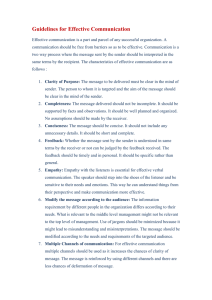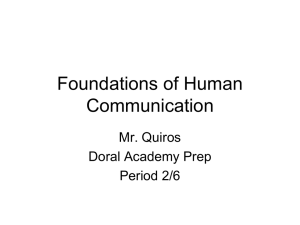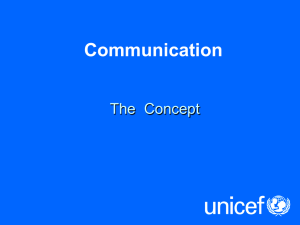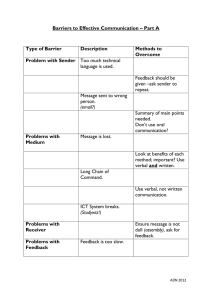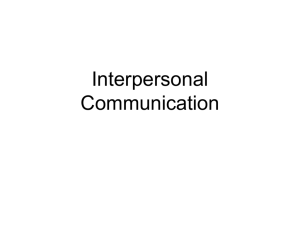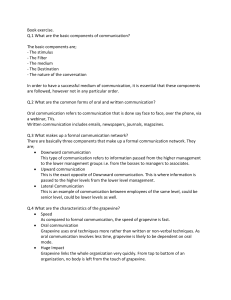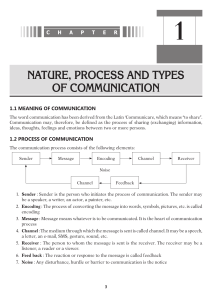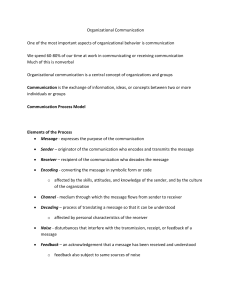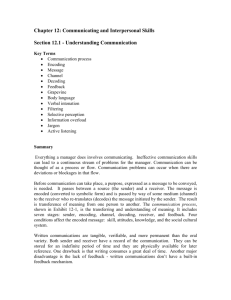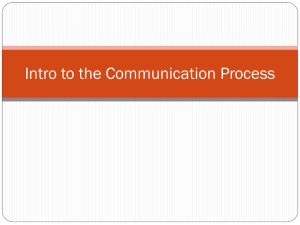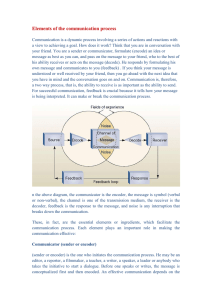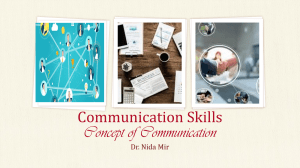BUSINESS COMMUNICATION By: Naimah Aldosary 2015 Why Study Communication?
advertisement
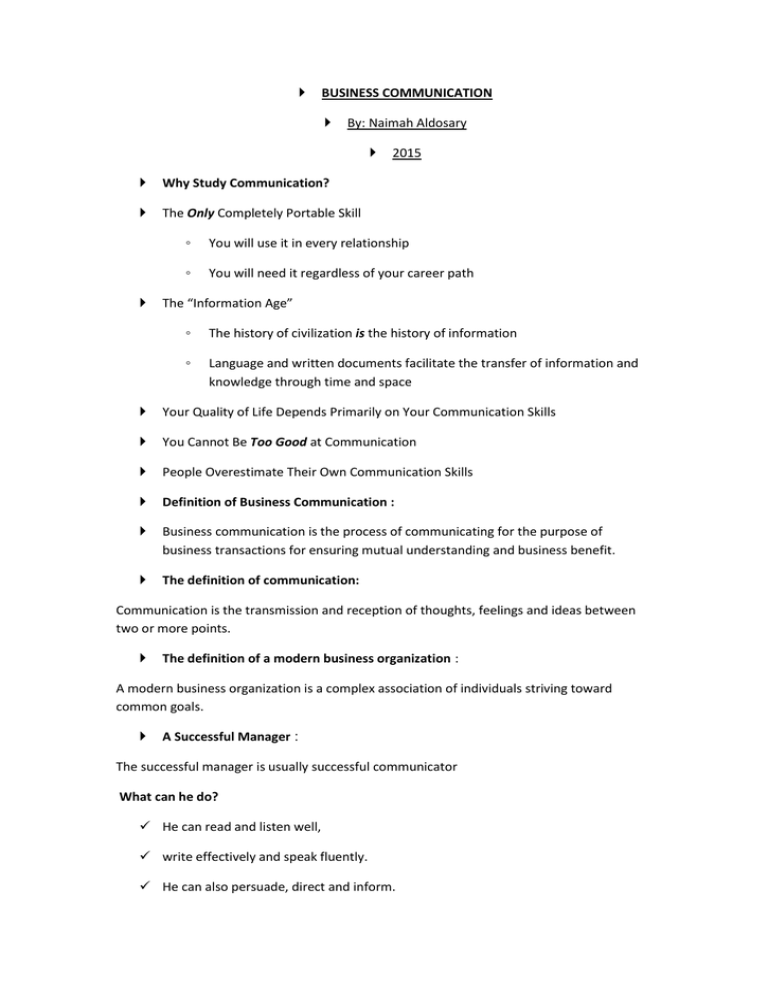
BUSINESS COMMUNICATION By: Naimah Aldosary Why Study Communication? The Only Completely Portable Skill 2015 ◦ You will use it in every relationship ◦ You will need it regardless of your career path The “Information Age” ◦ The history of civilization is the history of information ◦ Language and written documents facilitate the transfer of information and knowledge through time and space Your Quality of Life Depends Primarily on Your Communication Skills You Cannot Be Too Good at Communication People Overestimate Their Own Communication Skills Definition of Business Communication : Business communication is the process of communicating for the purpose of business transactions for ensuring mutual understanding and business benefit. The definition of communication: Communication is the transmission and reception of thoughts, feelings and ideas between two or more points. The definition of a modern business organization : A modern business organization is a complex association of individuals striving toward common goals. A Successful Manager : The successful manager is usually successful communicator What can he do? He can read and listen well, write effectively and speak fluently. He can also persuade, direct and inform. The elements of communication: The elements of communication are: 1-sender. 2-receiver. 3-message. 4-channel of communication. 5-feed back. 6-noise. The role of the sender: The role of the sender is to: 1-formulate the message. 2-encode the message in transmissible form. 3-select the channel of communication. 4-transmit the message. The role of the receiver: The role of the receiver is to: 1-receive the message. 2-decode and interpret the message. 3-understand the message. 4-send feedback to the communicator that the message has been received completely and accurately. What is noise? Noise is any interference, physical or psychological preventing communication. What is feedback? If the message has been received and an accurate response has been sent back to the encoder, this acknowledgement is called feedback. The directions of Communication The directions of communication are: 1-ascendant (upward). 2-descendant (downward). 3-lateral (sideways). What is business communication system provide ? It Provides the means for effective internal and external interchanges of ( ideas, facts , information , and instruction) Communication Breakdowns When communication breakdowns ? 1/ the communicator does not formulate, encode , or transmit the message well. 2/ there is a failure within the channel of communication 3/ the receiver does not perceive or comprehend the message. Closed System What is closed system? When the message has been formulated, transmitted, decoded by the receiver and feedback has been sent to the sender, then the system is said to be closed. The stages communications The 8 steps of communication are: 1- formulation 2- encoding . 3- selecting the channel . 4- transmission. 5- reception . 6- decoding . 7- understanding 8- feed back. Communication Networks 1- personal. 2- Internal. 3- External. What is internal communication ? The internal communication if communication flows from a home office to distant branch office. What is external communication ? The external communication if communication outside a business organization . Grapevine What is grapevine? Grapevine is an informal communication network that exists in many organizations in addition to the formal, structured organizational networks. Information travels much more quickly through the grapevine than through formal channels and may become distorted. classifications of business communication What are tow broad classifications business communication fall it ? verbal and nonverbal . What is verbal communication? Verbal communication involves the use of words Speaking, writing, and listening. What is non –verbal communication? Non – verbal communication involves gestures, body language , align language with on the use of words.
